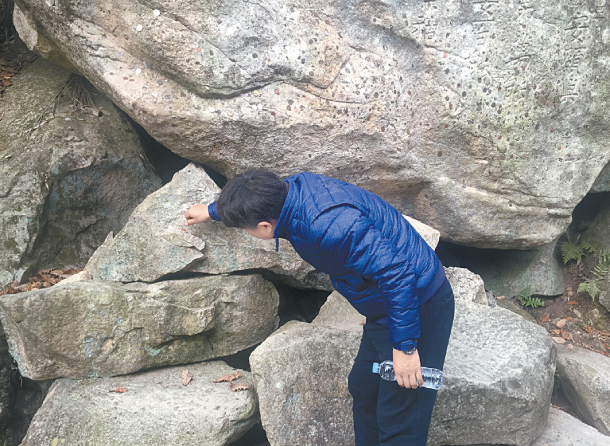A local look at historical sights : Korea Tourism Organization program pairs travelers with experts who are more than tour guides

To make the travel more informative, the Korea Tourism Organization has launched a new program called “Cultural Travel with a Local Expert.” It has designated 14 experts in different regions, including Hadong and Namhae in South Gyeongsang. The experts are more than just tour guides - there’s a poet, a nurse and others who have jobs that are representative of the people living in that area. They share stories from the area - sometimes factual, other times fictional - to give visitors a more intimate look at the region they are visiting.

The view, top, of a building at the Choi family house, which was made to recreate a scene from the novel “The Land,” also known as “Toji,” by Park Kyong-ni, in Hadong, South Gyeongsang. German-style homes, above, in the German Village in Namhae County, South Gyeongsang. [LEE SUN-MIN]
Poet Choi Yeong-wook, who has maintained a close friendship with Park, comes out to the entrance of a recreated home to explain what happens in each part of the house in the fictional story, and his own experiences with Park. He was the one who told Park that he wanted to open a literary center to commemorate the widely popular novel. Park rejected his idea six times, saying that she didn’t want to do anything to commemorate the novel, but finally relented the seventh time Choi asked.
Seok Suk-ja, a nurse who went to Germany in her 20s to help Korea achieve economic growth, takes visitors to the German Village in Namhae, South Gyeongsang, to show why the town is meaningful to her and to explain what her life was like in Germany. One thing she enjoys talking about is the village’s version of Oktoberfest, which started in 2010 and has become one of the largest annual beer events in the country. The budget was small to start with, but the festivals continues to see more visitors each year.
“We didn’t even know how many people would come or if anyone would actually come,” said Seok, remembering the time she and the other residents were running across the village to provide more food and beer to the huge number of visitors that came to enjoy the festival. “Many young people come here to drink and to see the village. They bring a vibrant energy to the town.”
Many of the residents in the village are those who have returned from Germany, where they worked as nurses and coal miners. The move to send Koreans to the European country was an effort to stimulate economic growth by bringing money into the country. In the village’s museum, she explains they lived off of only the bare minimum during their time abroad, and sent back most of their salary to Korea. They were paid 600 Deutsche marks a month, which was about 10 times more than the average worker in Korea would make at the time. The money sent to Korea contributed to building Korea’s basic infrastructure in the late 1900s, including the Gyeongbu Expressway connecting Seoul and Busan.
“The work was tough, but we appreciate Germany treating us just like any other German worker there,” said Seok. “I spent 30 years in Germany, and now I spend my time making Namhae a more cultural spot to visit.”

A visitor to Boriam in Namhae tries to stick a coin on the rock, in the hopes that he can bring himself good fortune. [LEE SUN-MIN]
BY LEE SUN-MIN [summerlee@joongang.co.kr]
Groups who want to participate in the program should contact the Korea Tourism Organization by calling the travel hotline 1330 or calling each regional county office to arrange a tour. To contact Namhae German Village Information Center, call (055) 867-8897, and to contact poet Choi Yeong-wook, call (022) 882-2675. Groups should inquire if there’s an opening to arrange a tour. The translating service can be offered upon availability. The tour is free, but a fee for a translating service may be added.










with the Korea JoongAng Daily
To write comments, please log in to one of the accounts.
Standards Board Policy (0/250자)